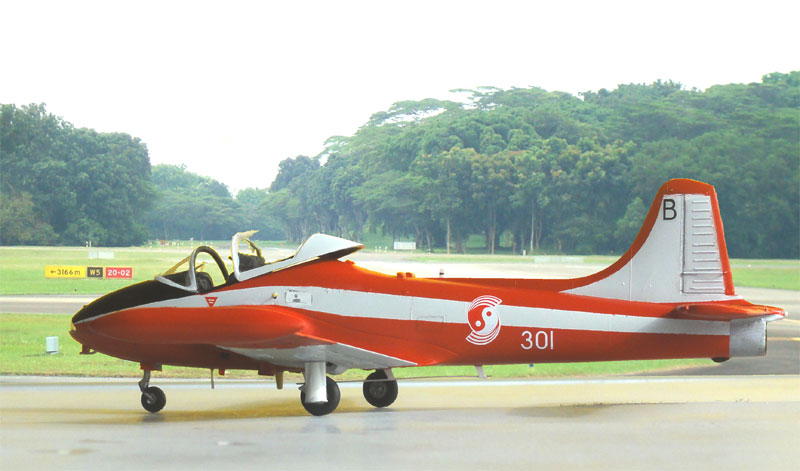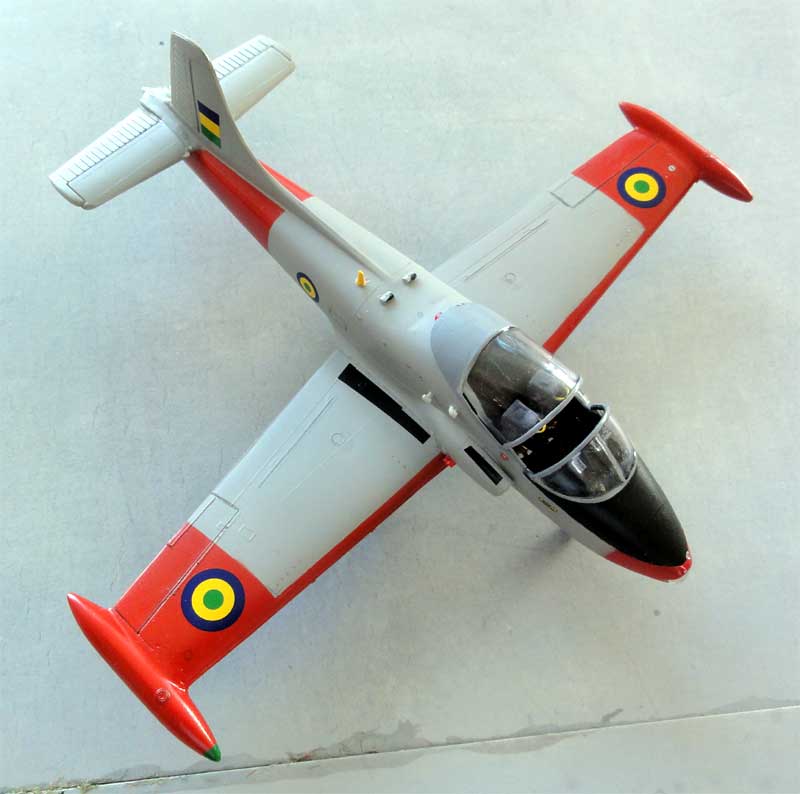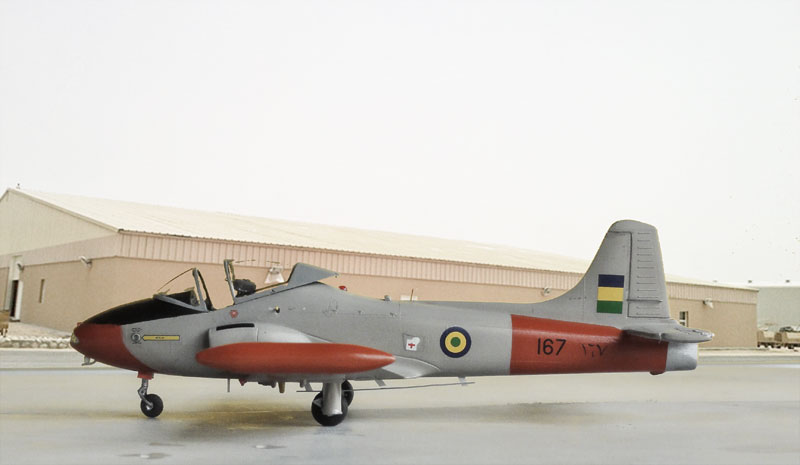[ page 4 ]
1/72 scale kits of the British Aircraft Corporation (BAC) Strikemaster family
Various World Air Forces used the Strikemaster as a "poor mans" attack and training aircraft in the 1970s-1990s.
Several Strikemaster drawings and profiles are nicely shown in de Scale Aircraft Modelling magazine of December 2015. This inspired me to make several of these models concentrating on markings and camouflages.
page 2
page 3
page 4
page 5
page 6
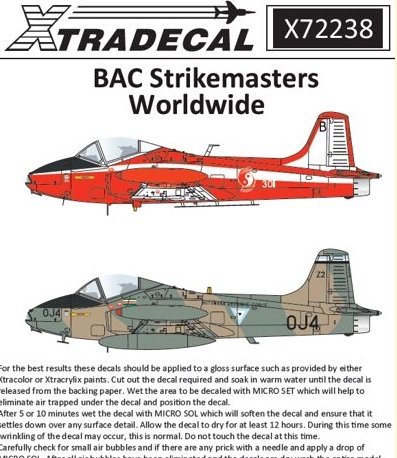
I also got a very nice XTRADECAL
decals sheet X72238 with dozens of air forces schemes... an incredible long list!
BAC Strikemaster
for...
Mk.80 G-AWOS demonstrator at Farnborough
Air Show 1968;
Mk.80A 1120 Royal Saudi AF, King
Faisal Air College, Saudi Arabia 1970;
Mk.80B 902/1026 Royal Saudi AF, King
Faisal Air College, Saudi Arabia 1968;
Mk.82 418/8 Sultan of Oman AF G-BAWF/277
at Paris Air Show 1973;
Mk.82 408/8 Sultan of Oman AF Dhofar
1975;
Mk.82 404 Sultan of Oman AF Masirah,
Oman 1994;
Mk.82 404 Sultan of Oman AF Masirah,
Oman 2001;
Mk.83 04/Z2 Botswana Defence Force
1990;
Mk.83 K167/110 Al-Quwwat, Kuwait
1980;
Mk.83 K167/120 Al-Quwwat, Kuwait
G-AYVK/461 at Paris Air Show 5/6/1971;
Mk.83 NZ6364/64 14 Sn R New Zealand
A Ohakea Air Base 1980;
Mk.83 502 FTS of South Yeman AF in
the 1970s;
Mk.84 301/B FTS Singapore AF, Tengah,
Singapore 1972;
Mk.84 301/B FTS Singapore AF, Tengah,
Singapore 1980;
Mk.84 303/D FTS Singapore AF, Tengah,
Singapore 2001;
Mk.87 601 Kenya AF 1980;
Mk.89 244/T44 Esc.de Combate 2313
'Halcones', Fuerza Aerea Ecudoriana 1980;
Mk.90 260/T60 Esc.de Combate 2313
'Halcones', Fuerza Aerea Ecudoriana 1990;
no.167 Sudanese AF 1980 (probably
a Jet Provost T.55)
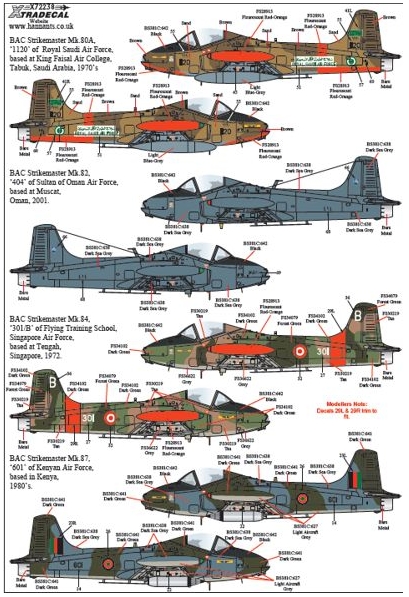

Some is shown here but a lot of markings
to make interesting models! It is noted though that only a few stencillings
are fully provided, the rest of these need to be sourced from the kits
and spare decal box.
There are also PAVLA resin
seats available for the Strikemaster. I bought a pair and used these to
detail the seat parts in the kit.
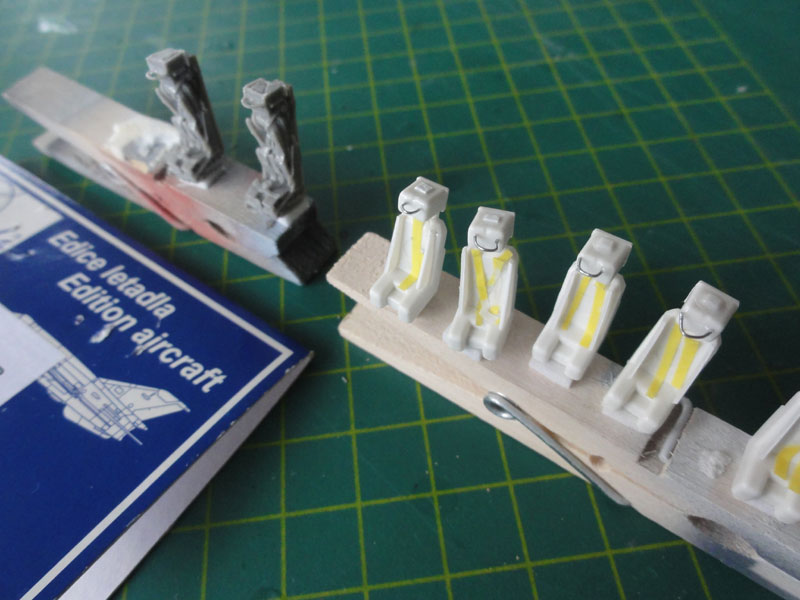
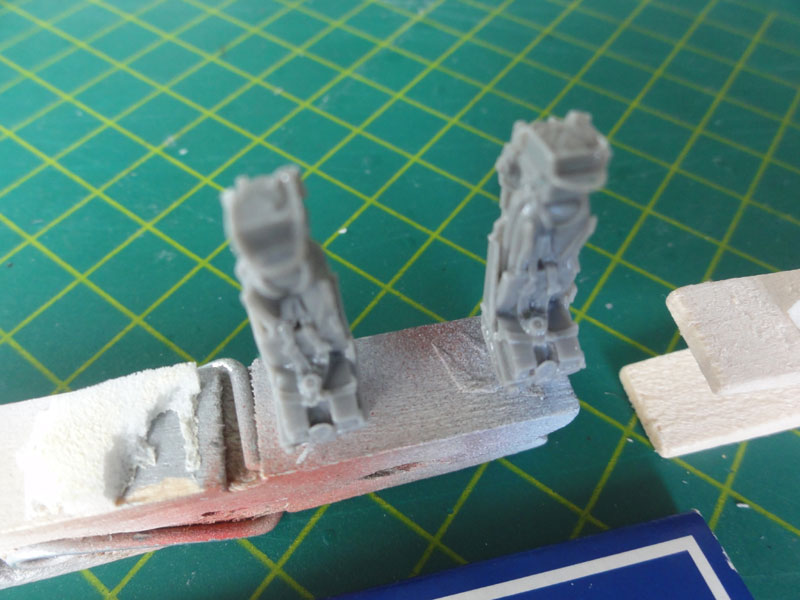
Overall seat colour is black with
dark grey details.
For "scale effect" it is better to paint these very dark dark. The seat
harnesses and parachute packs where painted medium brown with also a
bit of wash. Other colours like buff of the cushions and packs are also
seen.
The ejection handles on top were made from metal wire and painted
yellow with some black stripes.
A whole bunch of seats waiting for
their models!
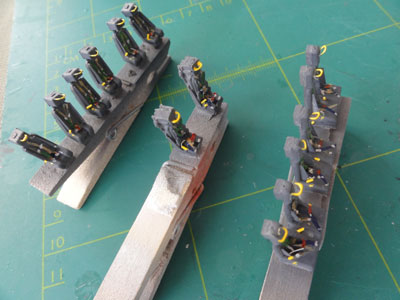
![]()
Some common remarks will first be made regarding the old Airfix kit with parts for a Jet Provost T5 or Strikemaster.

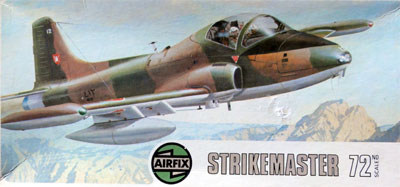
On the pages 1 and 2 the Jet Provost from this kit was modelled.
- the kit has alternative intake parts for an unarmed Jet Provost, the Strikemaster has also a lower fairing with small protrudring gun. Also, some extra air intake and scoops are in the kit. (on some but not all Jet Provosts lower nose strakes for better aircraft spin training are fitted; these are kit parts #44, 45 and not used for a Strikemaster).
- the kit has mostly raised panel lines. I simply retained these. (alternatively sand these off and inscribed the panel lines).
- the windscreen and aft canopy are separate parts. The aft canopy has very nicely also the aft sliding section so can be positioned open and will be installed later on.
- drill open any holes for desired pylons as per instructions.
- inside the cockpit from plastic card some detail on the sidewalls was set as well but no horizontal side consoles. Add a simple central console from card between seats and instrument panel. The cockpit tub and interior is rather dark, having black details and BSC381C: 632 interior grey. I used a mix of grey and black with some dry brushing. Ejection seats are black with various colours for parachute pack and harnesses.
- the older Airfix model has indeed the transparant nose glass section with landing lights. Glass part #32 needed a bit trimming.
- sometimes a small fairing is seen above the landing lights in the nose (for gun camera?). Check photos and add as needed.
- it is important to add SUFFICIENT nose weight in the nose as otherwise we get a "tail sitter".
- the wing flap and aileron edges were sawed in with a razor saw, this suggests movable surfaces.
- antenna layouts vary depending on the delivered mark and air force. But these are easily made.
The nose gear bay doors are in the
kit but are mostly seen closed on parked Strikemasters, so this bay was
set closed and any gaps filled with putty. The "sink marks" of some old
kits were also filled. The inner gear bay doors #52 are also closed on
parked aircraft, so these were set closed and this needed some filler.
Seen are here also the Strikemaster
intake parts with the fairings as well for the FN gun.
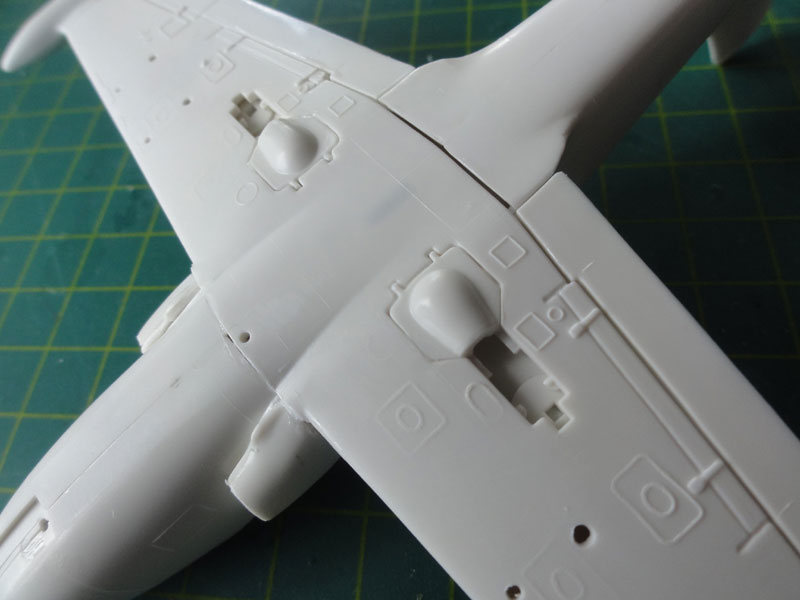
Assembly was simply done but the
smaller bits like the small intake scoops not yet installed. First fill
and any gaps and do the first round of sanding. When done, install the
airframe show some tiny intake scoops, mostly at the upper fuselage and
right side.
(The "link ejection chutes" for the FN gun cartridges at the lower intake area are not yet set in place)
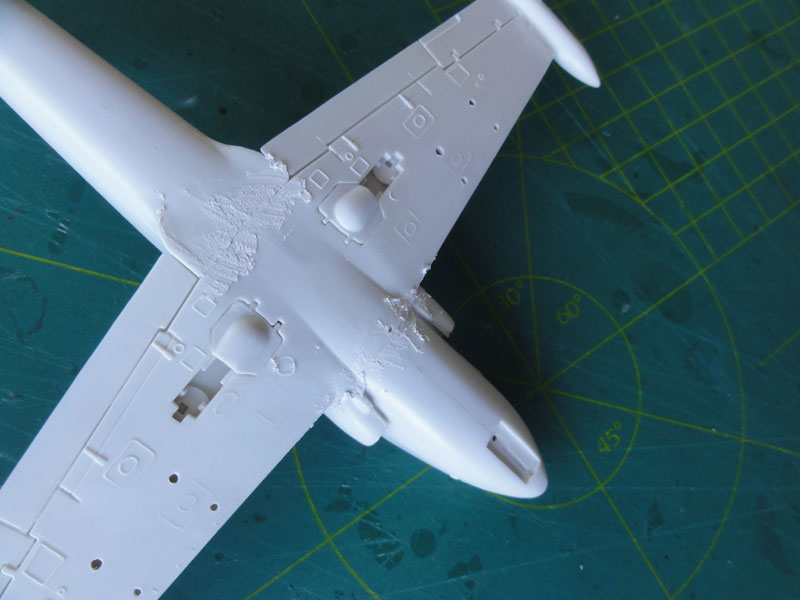
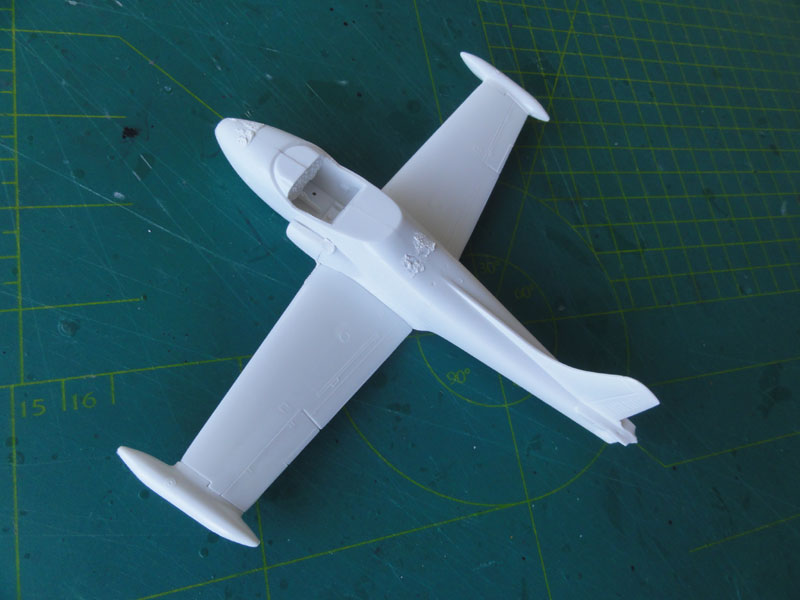
After that the basic model got a base grey colour airbrushing e.g Revell Aqua "Steingrau" to check for any surface and gap errors. These were corrected as needed with filler and sanding.
The model could now get it desired
air force scheme. (SEE BELOW FOR EACH MODEL MADE)
![]()
Final model completion than was
usually:
The tail bumper was painted black. And after masking, the anti-glare panel airbrushed matt black and the rear exhaust area hand painted aluminium.
Each model got, after getting their main colour schemes, a gloss varnish with Johnson Future/ Pledge before putting on any decals. This will prevent "silvering". The decals for the desired scheme were applied.
The wing tip fuel tanks were given a coloured tip with the paint brush: green on the right, red on the left.
Installing the landing gear with tyres painted very dark grey / coal black. I painted the gear struts and wheel hubs aluminium though not sure if some were not light grey.
Any gap below the windscreen can be closed with some white glue and when dried again painted.
On the intakes and inner wing, black walkways made from decals were set in place. These were painted with a dull varnish.
Canopy will mostly be installed opened up, slided aft showing the cockpit interior very well. Inside the forward sliding canopy frame, 2 rear view mirrors were installed made from thin aluminium foil. On the instrument coaming of Strikemasters, 2 small gun sights were added made from transparant sheet.
Various antenna's were checked and installed as well as some tiny red anti-collision lights on the spine (from transparant red plastic) and a "white rear" light at the tail-fuselage end. Note that all these lights and antenna's vary per mark of the Strikemaster and as per particular air force.
Below the nose a pitot and next to that "home aerial array" antenna's are seen; added from scrap.
At the forward wing-fuselage junction on each side "above the corner" a tiny air flow guide vane was installed made from thin metal. This was painted in the surrounding colour.
The Strikemaster intake parts were
installed before and at the lower edge, and on both sides a small piece
of rod (1 mm) was added to suggest the 7.62 mm FN gun. Aft of the lower
intake area the 2 x 2 "link ejection chute" fairings are in the kit #89,
90 but a bit thick. They were cut a bit finer and installed.
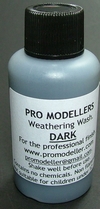
After decalling and adding details,
some wash applied using PROMODELLER black with a fine brush at moving surface
edges etc.
And finally each model while protecting
the clear canopy areas got a semi-matt coat through Johnson Future/ Pledge
using the usual techniques.
This gives a nice consistent sheen.
[A] BAC Strikemaster mk. 87 Kenya air force
Decals came from the XTRADECAL set.
Colours were airbrushed and required
masking. Paints used were in this order....
Lower surfaces Light Grey BSC381C:627
using Gunze Sangyo #322;
Dark Sea Grey BSC381C:638 using
Gunze Sangyo #331 acrylic;
Dark Green BSC381C:641 using Gunze
Sangyo #330;
Assembly and completion was as described
above.
The model got the long ADF antenna
made from scrap below the fuselage band some pylons were set in place but
without stores.
Besides the canopy frames, thin white/cream
stripes were added made from thin striping decals (from XTRADECAL). This
takes half an hour but will look really good. I also added a tiny yellow
coloured canopy opening handle on the left side of the cockpit from sprue.
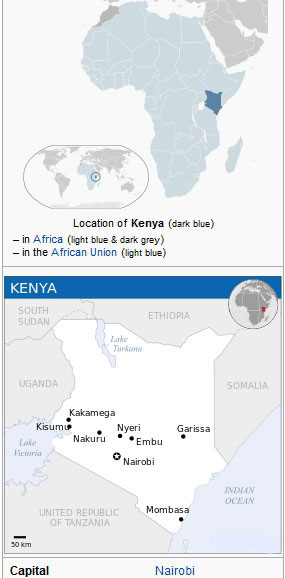 ..
.. ..
..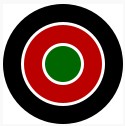 ..........
..........
[area: 580,367 sq.km | population: 55 million | capital: Nairobi | GDP USD 2,200 per capita nominal ]
The Kenya air
force was established mid 1964 after it became independent from the U.K.
British aircraft were supplied including half a dozen of Hawker Hunters
and Strikemaster end 1960s and early 1970s. Hawks were delivered in the
1980s and there was unrest in the early 1980s and the air force disbanded,
operating under "army control". Aircraft used as fighters were Northrop
F-5E/F many of which came from Jordan. In 1994 the Air Force was re-established
and still operates modernized F-5E/F and also a few transport aircraft
like the DASH 8, Buffalo and Harbin Y-12. Trainer aircraft are Bulldogs,
Tucano's and several helicopters are also used of both Western and Soviet
origin.
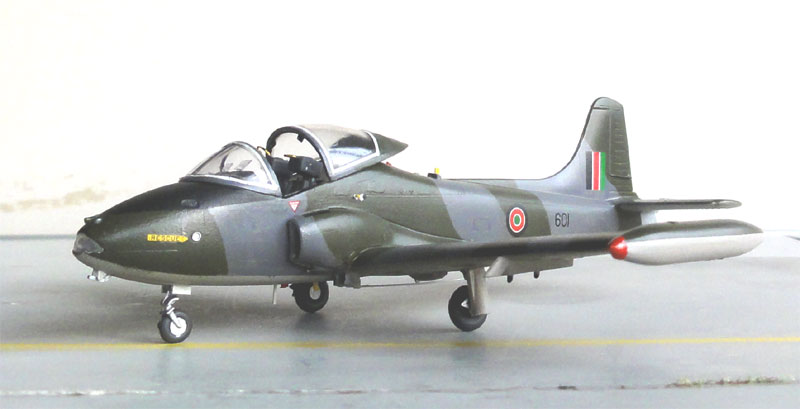
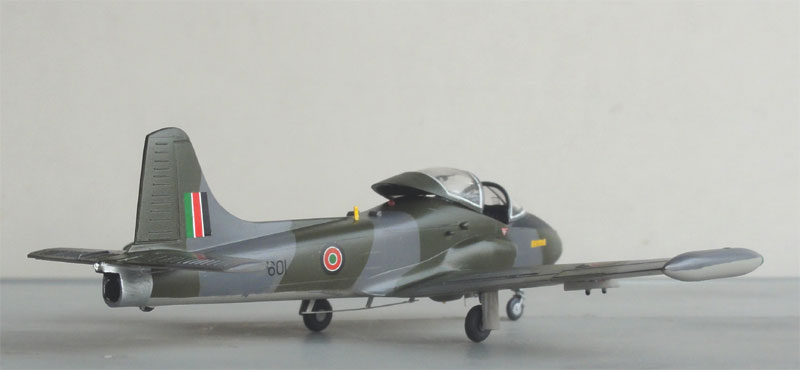

Note also the added tiny yellow
handle below the left cockpit and the air flow vane at the wing root is
also seen.
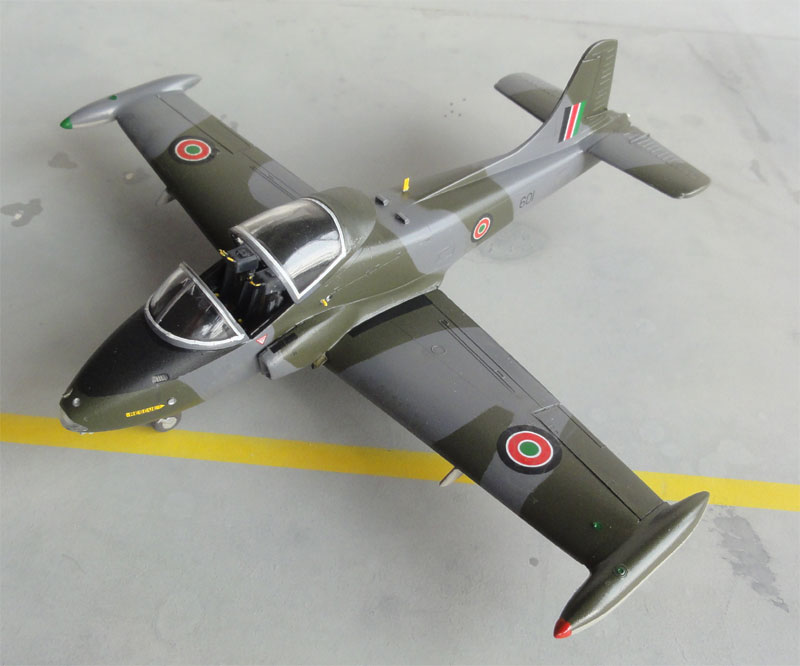
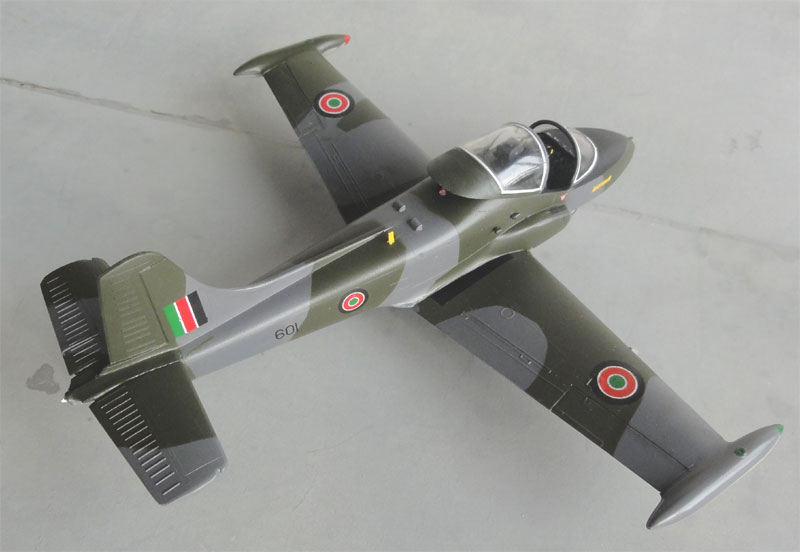
BAC
Strikemaster mk. 87 of the Kenya air force as operated also in the 1980s
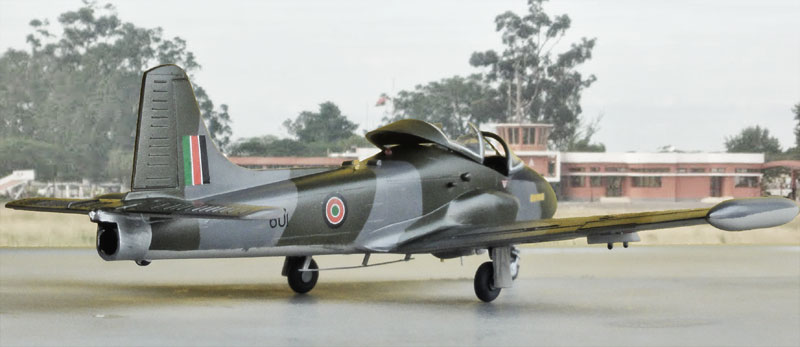
[B] BAC Strikemaster mk.84 Singapore training school
Decals came from the XTRADECAL set.
Colours airbrushed were....
an overall White (BSC381C: 302) coat
using any plain white, in this case Gunze Sangyo #H1 acrylic;
Red BSC381C: 537 using Revell aqua acrylic red #331;
Assembly and completion was as described
above.
It is noted that no Singapore roundels
were applied at the wings. The model got the long ADF antenna made from
scrap below the fuselage and kept in "clean configuration".
Canopy was set slided open showing the cockpit.
Mirrors were installed.
The "model was kept in good condition",
only a bit wash added into the moving surfaces recesses.

For information
about the Singapore air force look at this
(F-16) page here...
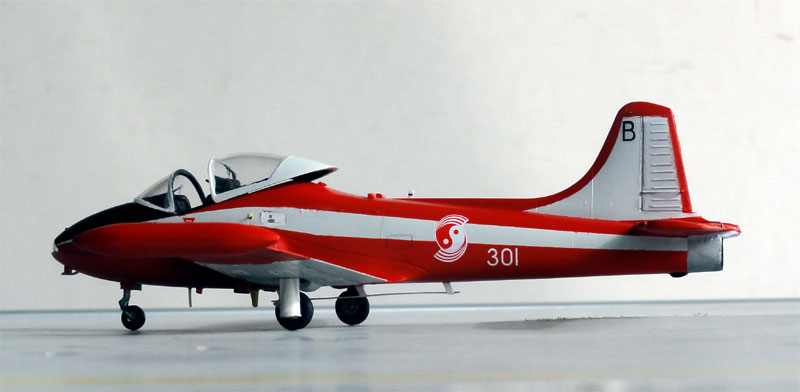
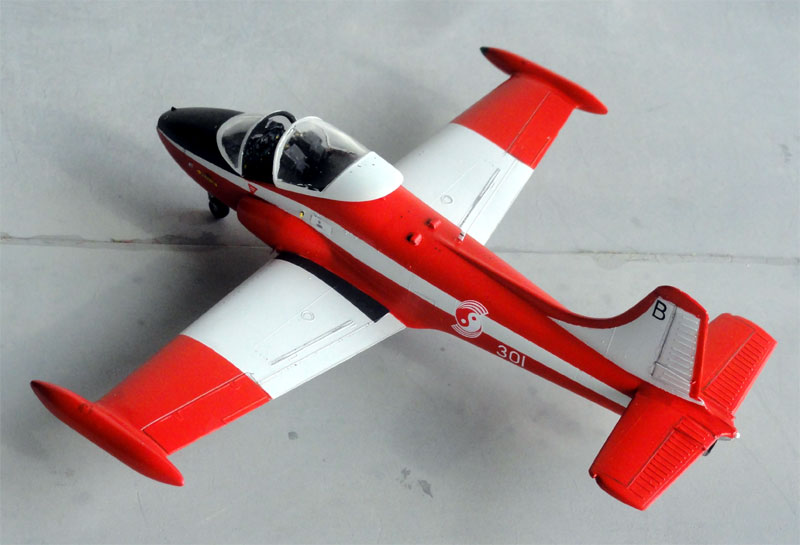
Note also the added tiny yellow
handle below the left cockpit
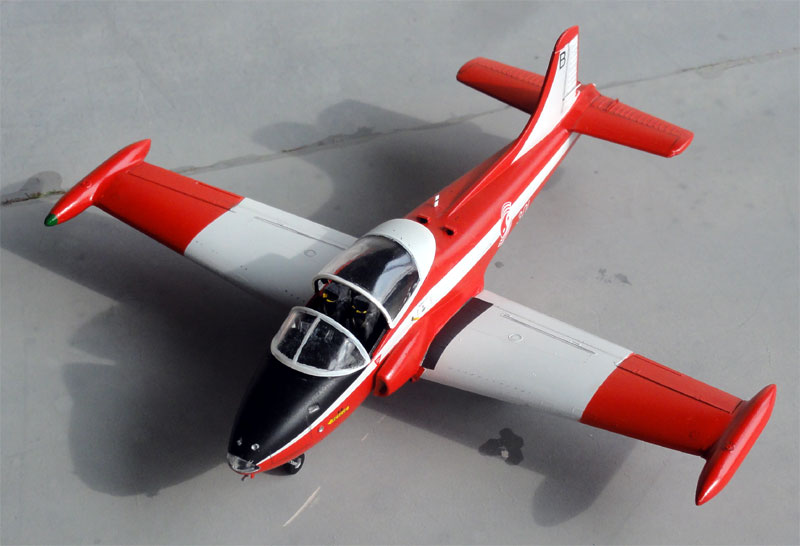

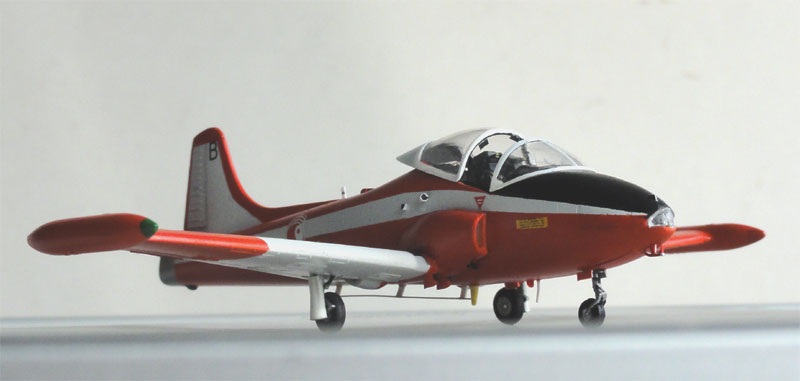
The smaller air intake scoops
at the right cockpit side are well seen.
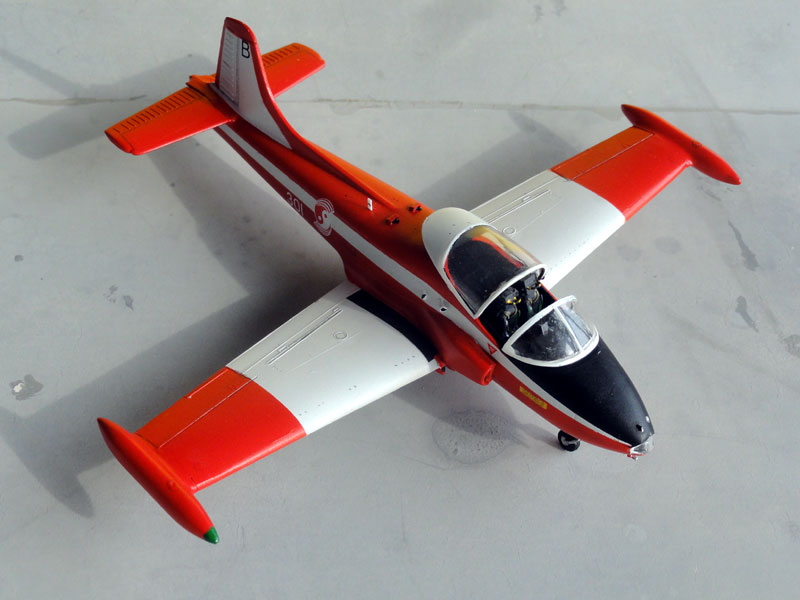
the small protruding gun camera?
fairing on the nose top is seen here as well
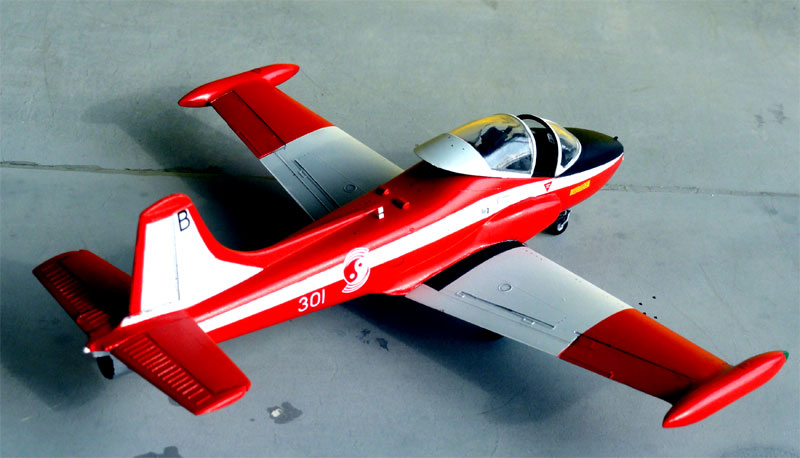
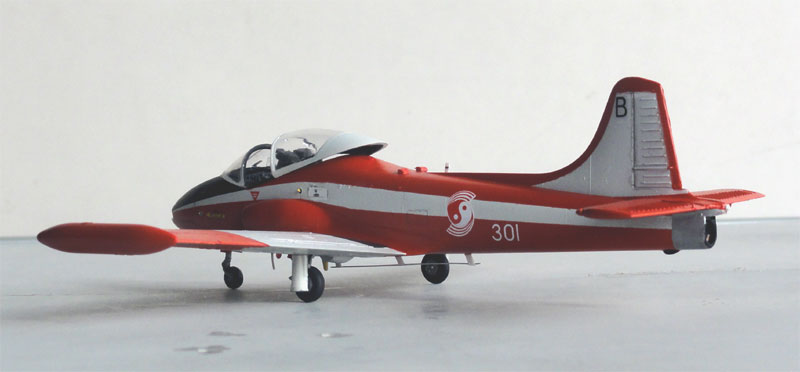
NOTE that there are no insignia on the wing
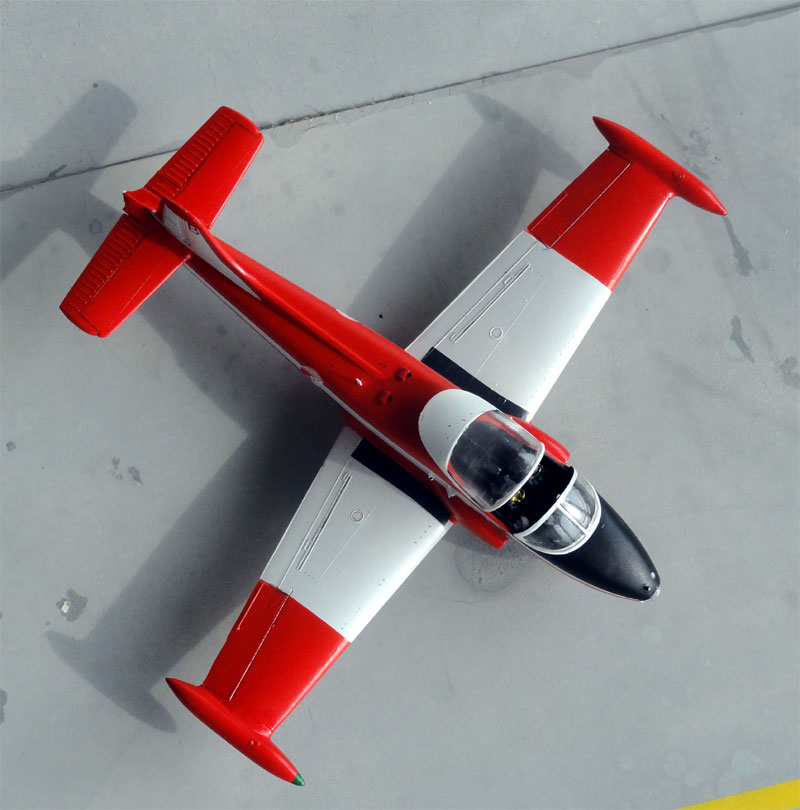
[C] Jet Provost T.55 of (former) Sudan air force
This older Airfix model was made as
a "Strikemaster" as indicated by XTRADECAL. But...
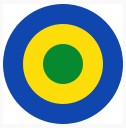
Sudan was one of the last countries that ordered Strikemasters in the 1980s. Ten mk.90 aircraft were ordered. But an arms embargo prevented aircraft being delivered. Instead six were sold to Ecuador, with another one aircraft sold to Oman. And although it is reported that Sudan got 3 Strikemasters with aircraft no. 367, 368, 369, no photos are known as used in Sudan. More probable it seems that the reportedly seen "Strikemasters of Sudan" were in fact Jet Provosts T.55 (Strikemaster mk.82) with aircraft no. 167, 177, 179, 187, 192, 197.
Here a photo
is seen that was probably taken in June 1969 of the Jet Provost T.55 in
the U.K before delivery to Sudan. This real Sudanese aircraft looks
very similar to the model drawn in the XTRADECAL set with no. 167....
It is reported
that it was an ex-RAF T.5 but modified before Sudan delivery as Jet Provost
T.55 (which is the export version of the Jet Provost T.5). It had no nose spin training strakes, probably
no hardpoints nor armament and also not any engine uprating of the Strikemaster
and also no nose strake. But the photo shows indeed the "Strikemaster like
air intakes and link ejection chutes" at the lower intake area that may
explain the confusion.
For more information about the Sudan Air Force, look at the MiG-23 page here....

Decals for Sudan came from the XTRADECAL
set (which suggests a mk.90) but seems in fact for Jet Provost T.55 and
still correct.
Colours airbrushed were in this order....
Light Grey BSC381C:627 using Gunze
Sangyo #322;
and red areas after masking using
Revell aqua acrylic red #331;
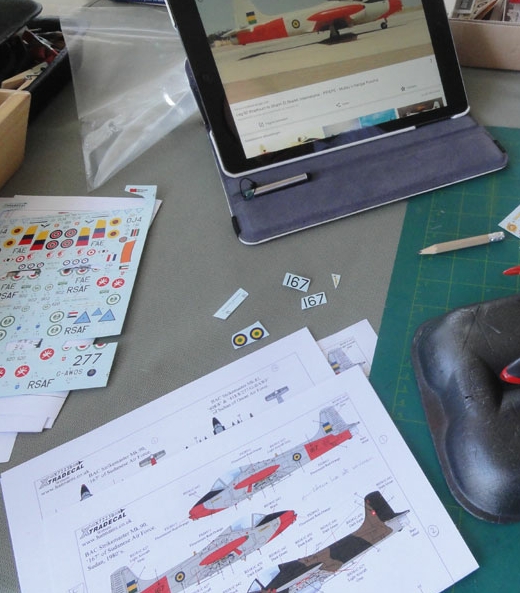
Model completion as as generally
described above.
The model got also the long ADF antenna
made from scrap below the fuselage. Also fitted was a large anti-collision
light aft of the cockpit and below the fuselage.
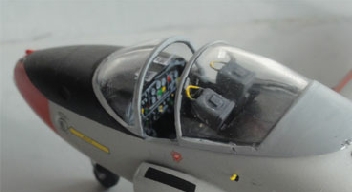 .
.
I was not sure if the T.55 had "gun
sights" but these were set in place as it seemed armed with the FN machine
gun. But no pylons were fitted as the T.55 probably had no provision for
these. Some wash applied using PROMODELLER black with a fine brush at moving
surface edges etc.
[C]
Jet Provost mk.T .55 of the (former) Sudan air force
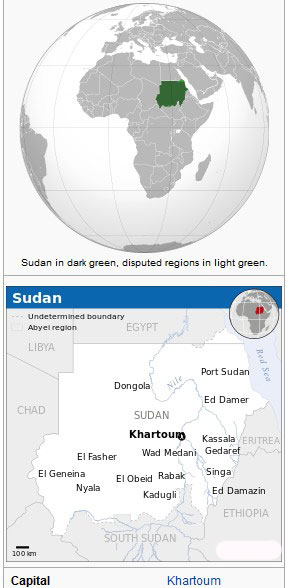 .
.
.. .
.
ooriginal
large Sudanese flag and roundel
. .
.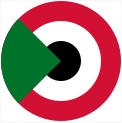 .........
.........
[old Sudan < 2011: area: 2,500,000 sq.km ]
[ current Sudan: area: 1,886,000 sq.km | population: 45 million | capital: Khartoum | GDP USD ~600 per capita nominal ]
Sudan was from 1900 part of the British condominium but became independent in 1956 with islamist rule. The Sudanese
air force was supported by the British and got old Provost
T. mk.53 jets in 1957. More English aircraft followed.
In the 1960s some Chinese aircraft followed and another batch of ex-RAF
refurbished Jet Provost T.55 (and probably not Strikemaster mk.90).
A large civil
war split the country with a separate South Sudan established in 2011.
Current aircraft of (North) Sudan in the divided country include several
MiG aircraft and Sukhois. South Sudan has some helicopters and smaller
propeller aircraft.
Jet Provost
T.55 "no 167" of the Sudan Air Force in the early 1970s. It has the old
style roundel.
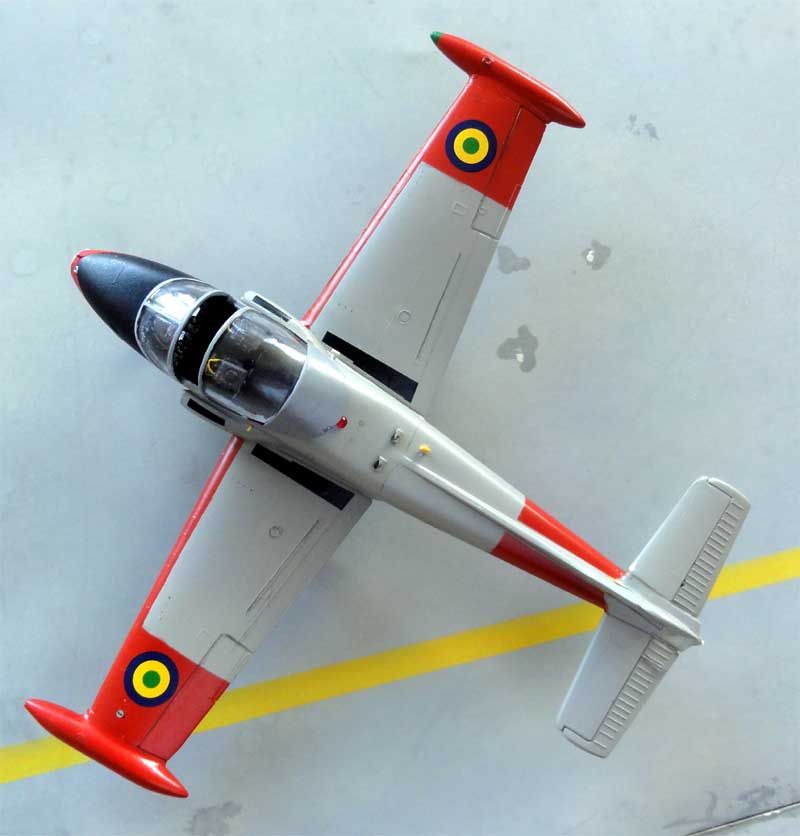
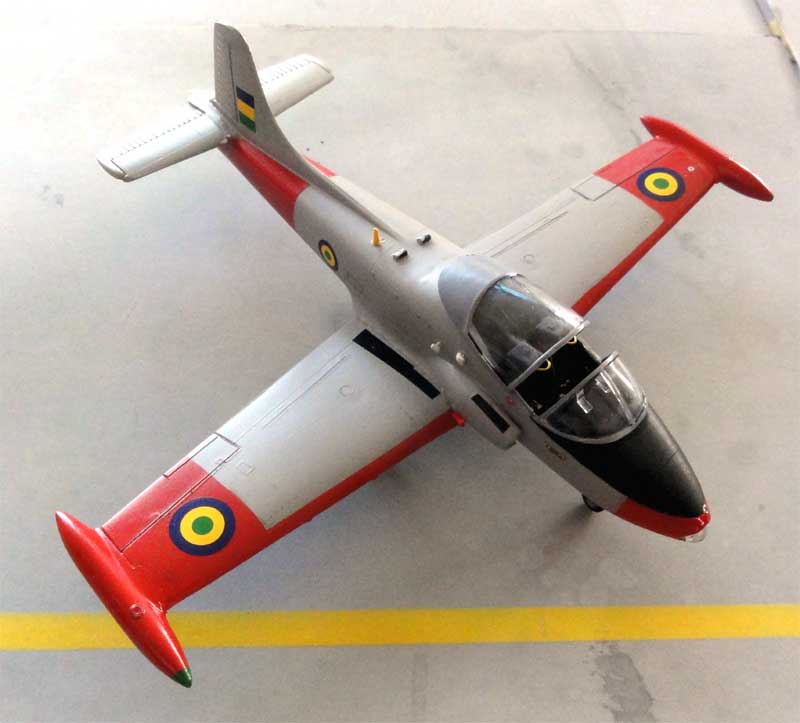

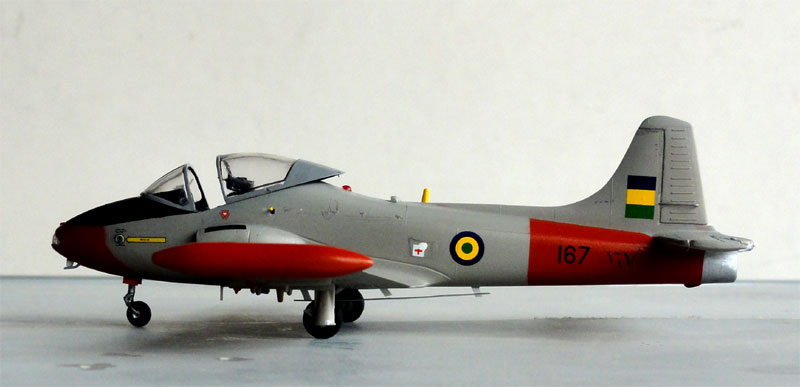
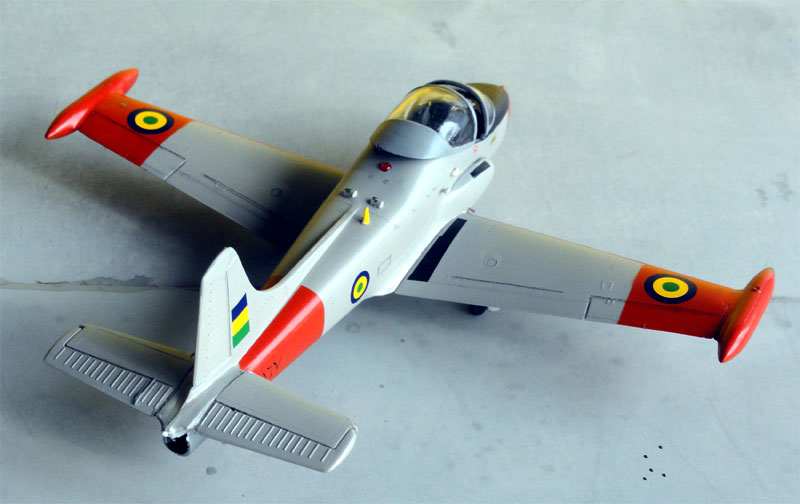
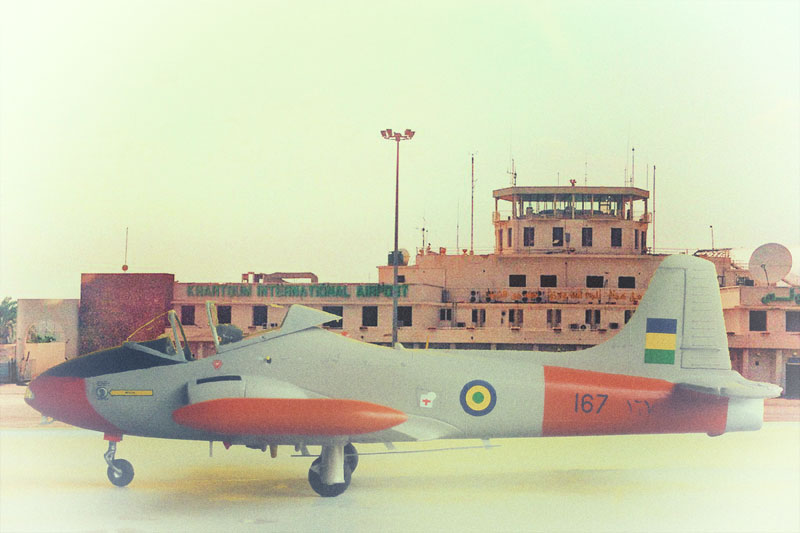
at Khartoum
airport, Sudan which is probably an ex-RAF refurbished Jet Provost
T.55 operated in the 1970s
On to next
[ Page 5... ]
Back to 1/72 Models.......
(c) Copyright Meindert "designer"/ All rights reserved. Your comments are welcomed by webmaster
Created this page
October 9, 2016
